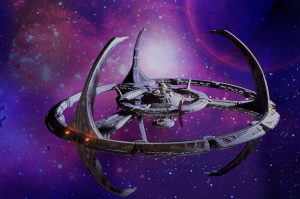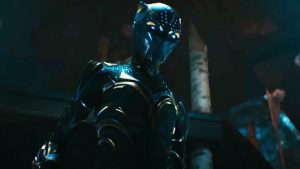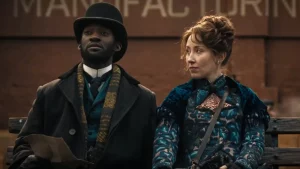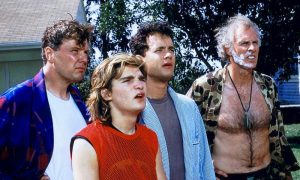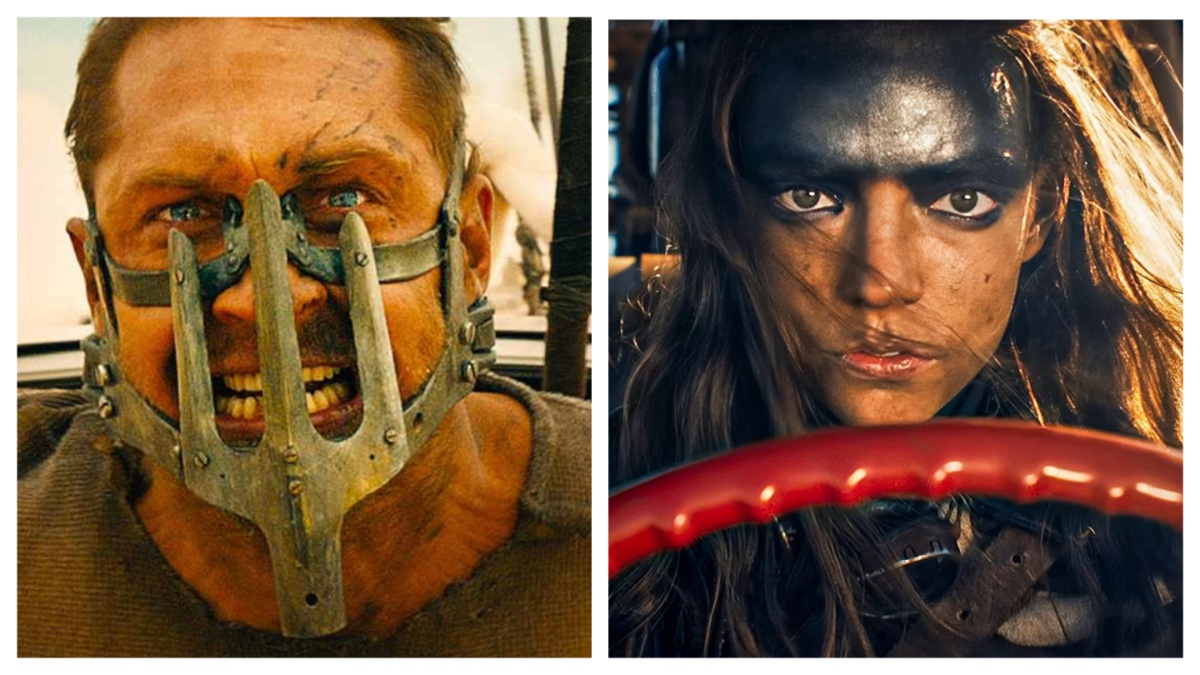
It is safe to say we will likely never watch Mad Max: The Wasteland, the long teased semi-sequel/prequel set between the events of the original Mad Max trilogy, which starred Mel Gibson, and Mad Max: Fury Road, the one that saw actor Tom Hardy step into the Aussie’s shoes. Like the movie that became this summer’s criminally overlooked Furiosa, The Wasteland was developed by franchise maestro George Miller and Nico Lathouris, the latter of whom is a dramaturge Miller originally brought in to develop an emotional authenticity and depth to Mad Max: Fury Road’s screenplay.
Instead their exploration of the material and characters went so deep that Lathouris ended up getting a screenplay credit on Fury Road while also producing versions of scripts that became the first draft of Furiosa and the still as yet unmade Mad Max: The Wasteland. To this day, Miller describes Wasteland’s treatment as more like a book than a traditional script. Furthermore, Miller said this intended project would reveal what Max Rockatansky got up to in the year leading up to Fury Road… and why he’d gone so feral.
While no one has officially confirmed Mad Max: The Wasteland is DOA, Furiosa’s box office is grim, and potential star Tom Hardy thinks the project is now mooted. If that’s the case, the loss of another George Miller dose of shiny and chrome madness in the desert is a real shame.
… Still, if you REALLY want to know what happened to Max that made him so, um, mad in Fury Road, the answers are already out there, perhaps to George Miller’s chagrin. Indeed, the exacting Australian director might be personally disappointed in the end results, but Avalanche Studios’ little-played Mad Max video game from 2015 has become a cult classic for a certain breed of gamers. And it is based extensively on Miller’s notes, research, and treatments for Mad Max: Fury Road.
For confirmation, look no further than the gamers who were intimately familiar nine years ago with a warlord named Dr. Dementus (whom Chris Hemsworth eventually played, albeit without the apparent PhD), and how that demagogue conquered Gastown before launching the Wasteland into a “40-Day War.” If you read all the details provided by the Mad Max game’s character profiles, or paid close attention to dropped lines of dialogue throughout the game, you would know all about how Dementus challenged Immortan Joe and the Citadel for supremacy over the dunes, and that Dementus’ defeat set the stage for both the game and the events that later transpired in Mad Max: Fury Road.
In other words: the Mad Max game gives a version, at least, of the ideas and events Miller and Lathouris had planned for Mad Max: The Wasteland, and even in the form of a different medium, and in a project Miller more or less disowned, the game tells us why mad, Mad Max is having hallucinations in Fury Road and is so unwilling to get involved with Furiosa and her frightful flight to the Green Place.
What Mad Max Was Doing Before Fury Road
Whether as a nod to fans who enjoyed the Mad Max game, or just a knowing wink to his own sense of world-building, one of Miller’s few traditional easter eggs to appear in Furiosa occurs right after Anya Taylor-Joy’s titular avenging angel builds a mechanical arm and cuts her hair down to a short, crisp buzz cut. Dropping her voice also several octaves until she sounds uncannily like Charlize Theron, Furiosa demands, “I need a vehicle” to the Citadel’s mechanics. A sharply featured man with a hunch then rushes up to the imperator and purrs, “I’ve got a vehicle.” The figure subsequently guides Furiosa to the ugliest bucket of bolts the Wasteland ever knew.
The name of the overeager engineer is Chumbucket, and he would go on to play a fateful role in the life of Max Rockatansky. Animated as a more traditional hunchback in the Quasimodo tradition in the Mad Max game, Chumbucket becomes Max’s sidekick. He’s also an acolyte who worships Max as a kind of motor-head messiah. He believes Max is a Wasteland “saint” and offers Max what Chumbucket calls his “magnum opus.”
At first glance, the Magnum Opus is just as ugly a collection of spare parts as what Furiosa drives into battle at the end of her movie. However, the goal throughout the game is to make those spare parts as ferocious (if not more so) than Max’s beloved Interceptor from the original movies. This is because when we meet Max in the game, he’s survived a nasty encounter with one of Immortan Joe’s sons, Scabrous Scrotus. This same character appears in Furiosa and is played by Josh Helman, albeit in the game he more closely resembles another of the Immortan’s sons, Rictus Erectus, who is played by Nathan Jones in both Furiosa and Fury Road. Perhaps that is because when Avalanche developed the Mad Max game, the developers only had Jones’ fearsome wardrobe photos as Erectus to use as a model.
In any event, the game begins with a Max who has already been in the desert too long. He is isolated and happier that way, just like the silhouette of a figure standing by his Interceptor as he watches Taylor-Joy’s Furiosa walk half-dead across the waste. But after Scabrous Scrotus steals Max’s “Black on Black” Interceptor, and leaves Max for dead in the same desert, the “saint” becomes determined to use Chumbucket to build a new car that can escape Wasteland and reach the fanciful “Plains of Silence.” Hence the game is Max and Chumbucket’s odyssey to scrounge together a ferocious vehicle in the shadow of a Gastown now ruled by Scrotus like his own private fiefdom.
How the Game Bridges the Gaps Between Furiosa and Fury Road
From the above setup, certain discrepancies that exist from the otherwise thoroughly connected Furiosa and Fury Road become bridged. While Scrotus is one of the loudest voices in Immortan Joe’s war counsel in Furiosa, he is entirely absent in Fury Road. Yet a character bearing that name is the chief villain of the Mad Max game, which sees Max drive a chainsaw through his head and, later, remove the same chainsaw blade in order to kill the warlord. Similarly, we recognize why Fury Road might begin with the War Boys so relentlessly chasing Max until they have knocked over his car and dragged him back to the Citadel in order to be a blood bag: he’s become a figure of infamy among the War Boys after he’s killed so many of their kind in the desolation around Gastown.
Yet the most interesting thing about looking at the game to fill in gaps is how it connects the dots between Max from The Road Warrior and Beyond Thunderdome, who reluctantly helped people, to the one who attempted to leave Furiosa and the Wives of Immortan Joe stranded to their fates in the War Rig near the beginning of Fury Road. Perhaps he did this because he recently tried to play the hero… and it went terribly wrong.
Indeed, many long time fans of the series seemed confused back in 2015 while watching Mad Max: Fury Road. In that film, Hardy’s Max is haunted by the image of a little girl who said he let her die. Max would seem to agree since Hardy mutters, “You’re dead.” But the only child Max Rockatansky had in the original trilogy was a son, who died much the same way the little girl did in one of Max’s visions where a car runs her over.
Obviously a man introduced with a long beard eating a live lizard as it crawls on his shoulder isn’t what we would call a reliable narrator—he even concedes he misremembers things in that movie. Nonetheless, he turned out to be right about one thing. He did let a little girl die. And her mother. Their names were Hope and Glory.
Two of the only major supporting characters beyond Chumbucket in the Mad Max game, Hope is a lot like the Wives of Immortan Joe: a beautiful woman who’s been reduced to property, or a sex slave, by the various men of power in the Wasteland. In her profile, it’s suggested she was even a prize kept by Dementus—which the movie Furiosa might allude to when Hemsworth’s villain asks if Furiosa’s mother had red hair (as Hope does in the game). Hope also had a daughter whom she named, cutely enough, Glory. The irony of those names is one of the few things that can get the video game’s perpetually moody Max to chuckle. He also agrees to help Hope and Glory escape their imprisonment in Gastown, but only as a courtesy after Hope saves Max’s life.
Ultimately, we learn from Max’s delirious visions in the game that he views Hope and Glory as surrogate replacements for the wife and son he lost in the original Mad Max film, but the thought of that fills him with shame and self-loathing. Despite having an attraction to Hope, and a brief but apparent soft spot for Glory, he does nothing to help them after getting them out of Gastown…. and later when he is betrayed by Chumbucket (who is out only to protect his “Magnum Opus”), Scrotus’ minions brutally murder Hope and Glory in a tableau reminiscent of the death of Mary Jabassa (Furiosa’s mother) in Furiosa.
The video game thus ends in bitter, nihilistic despair. As you can glean from the video below, Max goes on a rage-filled killing spree, chasing and slaughtering Scrotus while hearing the voices of the very dead Hope and Glory in his head. Not only are they uncharacteristically bloodthirsty in their taunts and admonishments of Max—little Glory bellows in his mind, “Write my name in their blood!”—but they are damning in their reproachment of Max. He really did let them die. And in an act of empty atonement, he kills their murderers while letting Chumbucket die with the Magnum Opus in the process.
Max wants to be alone. And so he is when the game ends where it began. Max recovers what’s left of his Interceptor and drives off into the desert.
In the broad strokes, this fills in the details of what might have been Miller’s triptych. After Furiosa kills Dementus and ends the 40-Day Wasteland War, Scrotus is put in charge of Gastown where in the aftermath of civil war, he rules his corner of the Wasteland like a particularly brutal despot. A loner named Max gets involved in a fight to overthrow Immortan Joe’s son, but due to his own selfishness, does not do more to protect innocence. Thus like his wife and son before them, a mother and child die.
As with the original Mad Max film, Max Rockatansky achieves a pyrrhic victory. He avenges the dead, but does nothing to make the world better. The disillusionment of this drives him further off the reservation and into the feral fellow we meet in Fury Road. Slowly he realizes, like Furiosa, his only chance at redemption is saving the Wives of Immortan Joe from the ugly fate he failed to spare other women from.
Just One More Legend Around the Campfire
While the pieces fit surprisingly neatly when you look at them, they are not perfect. The game’s Scrotus, once again, looks more like Rictus than Josh Helman; details obviously changed in the development process, including the fact that (Dr.) Dementus is killed and/or tortured for years by Furiosa in Miller’s most recent movie, and yet in the game we are told Scrotus killed Dementus at the end of the war; and then there is Max himself. Not only does the video game’s Max look nothing like Gibson or Hardy, but he also acts like an even more brutal and violent man with the entire tone of the game being filled with fatalistic despair. Miller’s fragile flickers of hope and dignity in the films are nowhere to be found.
That might be one of the many reasons Miller ultimately expressed disappointment with the interactive project. But then, discrepancies and inconsistencies are baked into the DNA of the Mad Max mythology. As our own Joe George explored while examining the History Man’s importance in Furiosa and beyond, these stories have never been particularly concerned with canon or continuity. The Mad Max films are intended to express a dystopian folklore. They’re tall tales exaggerated, or perhaps made up whole cloth, by other survivors out in the ruins of society. In a world gone mad, stories about a lone road warrior or the Wasteland’s darkest of angels give comfort in the dark. They’re morality plays about finding honor and meaning in a meaningless existence, told around campfires like ballads about Robin Hood or King Arthur in another age.
One storyteller’s Max might better resemble Gibson’s literal hero of children in Beyond Thunderdome; another sees him as a more strapping unrequited figure in the story of Imperator Furiosa’s rise to the top of the Citadel hierarchy; there could even be the edgelord out there who suggests Max is no hero at all, as seen in the particularly bleak video game telling.
Cumulatively, they paint a picture of human survival and endurance and provide a loose framework of mythology for a warrior, or two, who did the right thing when no one else would.
The post The Mad Max Video Game That Fills in Furiosa and Fury Road’s Gaps appeared first on Den of Geek.



